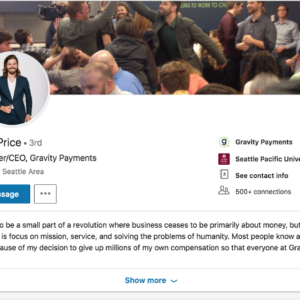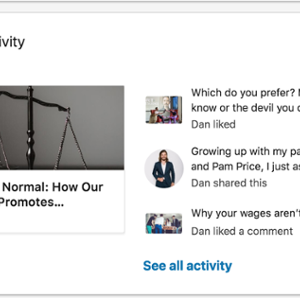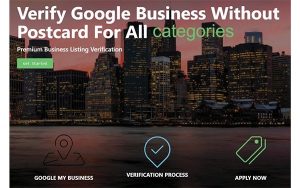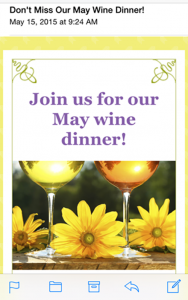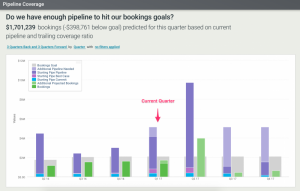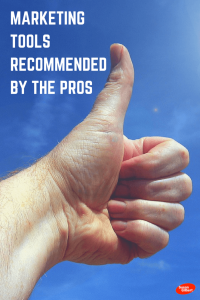— July 24, 2018
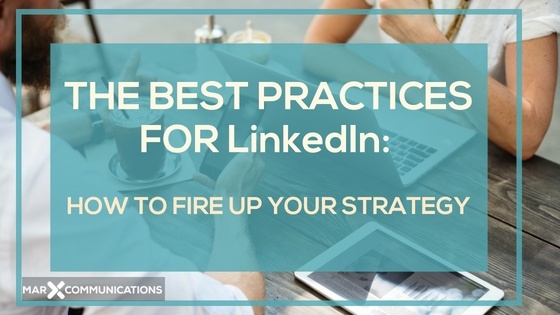
When did you take a long, hard look at your LinkedIn strategy? If you’re losing momentum and your strategy is lagging behind your competitors, it’s time to look under the hood. Staying on top of the latest best practices for LinkedIn will rejuvenate your strategy — and ensure it’s firing on all cylinders.
LinkedIn constantly improves its offerings, becoming a hub for creative and professional networking. At last count, LinkedIn had around 562 million users worldwide — with 133 million in the United States. It’s an impressive audience, all of whom you have the power to reach.
This does not, however, mean that you have an all-access pass to your audience. it takes hard and consistent work to reach and engage your audience on LinkedIn. But what exactly needed to get your LinkedIn content strategy up to speed?
Let’s check out some of the best practices that should be priority #1 in your LinkedIn marketing strategy.
7 Best Practices for LinkedIn That Will Help You Succeed
1. Create Content on LinkedIn Publishing Regularly & Vary It
LinkedIn and content marketing go hand and hand — as we can clearly see in the success of its publishing platform.
While long-form posts definitely have their place in the LinkedIn ecosystem, don’t forget to vary your content between long-form and short-form. People who are simply browsing through might not take the time to read a long post, so having shorter options is important to engage all your visitors.
Maintain a diverse array of topics within your LinkedIn content strategy. These topics should range from trends and insights to how-to and educational posts. Don’t stick yourself into a box that limits the reach of your content strategy.
As with any publishing platform, consistency is key. Keep your audience coming back with an always fresh batch of content to fill their needs. Don’t allow that spark of interest to die out.
Most likely, not everyone in your audience will catch your content the first time you post it. That is why it is important to post your content several times on the network.
Keep your audience coming back with an always fresh batch of content to fill their needs
Take a page out of Dan Price‘s book. He is the CEO of Gravity Payments, a credit card processing company. His content spans a wide variety of topics and interests, both inside and outside of his industry. But it doesn’t matter that some of his content doesn’t directly impact his industry — the engaging nature of the content makes up for that. He is a great example of keeping his backlog of content fresh and interesting.
2. Invest Some Real Time In Your Company Page
Your LinkedIn company page may just be the most important part of your LinkedIn marketing strategy — you can post regular and engaging content, but if people don’t know who you are, it won’t take you anywhere.
Here are a few important components to keep in mind for your company page:
Profile Picture Choose a high-quality photo (usually this would be your brand’s logo) to represent your company. It should ideally be 300 by 300 pixels — any less, and you face the risk of having a blurry, unprofessional look.
Cover Image Next to your logo, this is your brand’s billboard on LinkedIn. While your profile picture tells people who you are, your cover photo tells them what kind of brand you are. It should relate to either your industry or company. Invest your time in a quality design. And make sure it fits within LinkedIn’s size recommendations: 1536 pixels wide by 768 pixels high.
Overview Section People will read this to learn more about your brand, so it should not be written on the fly. It should be keyword optimized to make your brand more visible to potential leads. This is not the time to copy verbatim from your website — this should be a unique message that is crafted specifically for your LinkedIn audience.
Once you’ve created your profile page, it’s time to promote it. Ask your employees to follow your company page, which will make it visible to their contacts. Link to it on your website and in your email signature line to encourage more traffic.
Take this example from the inbound marketing experts at Hubspot. The company’s clear-cut profile picture and inviting cover image make its LinkedIn company page pop. Its About Us section is well-crafted and to the point, but also brings out the rich history and company culture that sets it apart from its competitors.
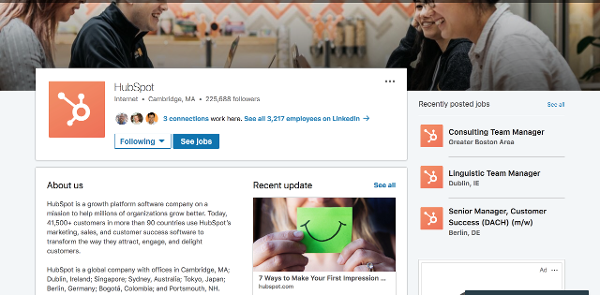
3. Bring Your LinkedIn Strategy to Life with Video
One third of all online activity is spent watching videos. You’re clearly missing out if you ignore video as a viable marketing tool. The majority of social networks — LinkedIn included — see the importance of video and thus have made it a key part of their platform.
How can you best use video to boost your LinkedIn results?
First, add video to both your brand’s company page and your personal profile. This could be in the form of an “About Us” video or a behind the scenes glimpse at your company.
Second, use video to regularly engage your audience in your status updates. This could be to talk about the latest industry trends or problems facing your audience. This doesn’t have to be terribly long and drawn out — 60 seconds or less is the ideal length. You can use the opportunity in your video to highlight recently published posts that your audience can read, which drives traffic to your posts and engages your audience further.
Take this example from Squarespace, an easy-to-use website design tool. It regularly uses video to highlight its product features and share its customers’ journeys, which is what this little gem does. It shows how a young entrepreneur left her job to pursue her dream, and the part that Squarespace played in making that dream a reality.
4. Leverage LinkedIn for Thought Leadership
Thought leadership is more than simply a good reputation. 47% of C-suite execs and decision makers said that thought leadership content had a direct impact on their decision to engage a company. And a third of B2B buyers said that they had removed a company from consideration based on thought leadership output. With so much on the line, your company needs to develop a strong thought leadership strategy — and LinkedIn can help.
LinkedIn and its publishing platform have the potential to boost your thought leadership strategy. Use LinkedIn to publish top-notch, original content. Discuss the latest industry trends, provide how-to advice, and offer insightful industry commentary that showcases your expertise.
After people read your content, they may click on your profile to learn more. Before stepping up your publishing game, take the time to beef up your personal profile. This includes a professional headshot and a well-crafted summary that will engage your visitors.
5. Become Part of the LinkedIn Community
LinkedIn has done a great job segmenting your audience. With groups and communities on almost every aspect of any industry, you can always find a group that fits your niche. And what’s great about these groups is that they give people a chance to talk about industry topics. It’s the perfect example of a willing and attentive audience.
But if you’re going to make the most out of these groups, keep this in mind. Don’t approach a LinkedIn group or community with the idea of selling your brand. This is an area to talk about issues and trends that are important to the group — not to center the conversation around you.
Share content that discusses important issues and problems facing your industry. If you’ve found a solution that works — again, not one of your products or services — then share that with the group. Add to conversations with meaningful comments that showcase your industry expertise.
6. Target Your Audience with the Right Ads
It’s nice to have choices — especially when you invest your money into a social media marketing strategy. And LinkedIn delivers a nice variety of options depending on your goals, messaging, and budget. These options include:
Sponsored Content Got a piece of content that has performed really well with your followers? Pay to get it in front of more eyeballs with sponsored content. This works especially well with high-value content that establishes your expertise and genuinely helps your audience.
Text Ads Text ads appear at the top of LinkedIn pages and are a short and sweet way to get people to check out your brand. Because these are inherently short, it forces you to whittle down your message the essentials.
Sponsored InMail Just as the name suggests, Sponsored InMail ads appear right in your prospect’s inbox. These ads allow you to deliver your message (including visual graphics) in a place where they can’t help but notice it, along with a visually appealing call to action that moves them to the next step.
Carousel Ads This one is still fairly new — literally just rolled out in June of 2018 — with a whole lot of potential for B2B marketers. Carousel ads allow you to bundle up to 10 content offers into one rotating ad, with swipeable cards that you can customize for each offer.
Each of your campaigns is unique. With LinkedIn’s options, tailor your ad to meet the needs of each campaign.
7. Engage Your Audience with SlideShare
Slideshare is designed to fit seamlessly into your LinkedIn strategy — and it is a great way to add some spice to your LinkedIn content marketing. In fact, this platform was acquired by LinkedIn in 2012, with features that marry the two platforms nicely.
To date, there have been 19.7 million SlideShares posted to LinkedIn — and SlideShare presentations garner on average 159 million page views every month. These statistics speak for themselves as to the potential for this marketing tool.
How should you use SlideShare to best amplify your brand and message? Content marketing 101: Never use SlideShare to shamelessly promote your brand or products — it will only result in a frustrated audience and a damaged brand reputation.
Instead, deliver value throughout your SlideShare content, with your logo subtly used to increase brand recognition. At the end of your SlideShare, once your audience is happy and satisfied, offer a call to action. This could be an invitation to check out your website or download an offer.
Give your Slideshare presentation a leg up by using SEO best practices to make it more visible. Once you’ve chosen a keyword that is relevant to your content and which your audience searches for regularly, include it in your title and your description.
Take this example from TopRank Marketing, a marketing agency that specializes in influencer marketing. Its slideshare, 15 Ways to Fail and 25 Ways to Win with Influencer Marketing, has received over 42,000 views, and is a great example of how engaging a SlideShare can be. It uses captivating visuals and easy-to-read snippets to teach the ins and outs of influencer marketing. It nicely wraps up with a CTA to join Social Media Marketing World to learn more about influencer marketing.
In Review…

LinkedIn is an incredible social network with the power to get you where you want to go in your business. Use these best practices for LinkedIn to ensure everything is tuned up and ready to go so you can make the most out of this powerful tool.
Digital & Social Articles on Business 2 Community
(62)
Report Post
